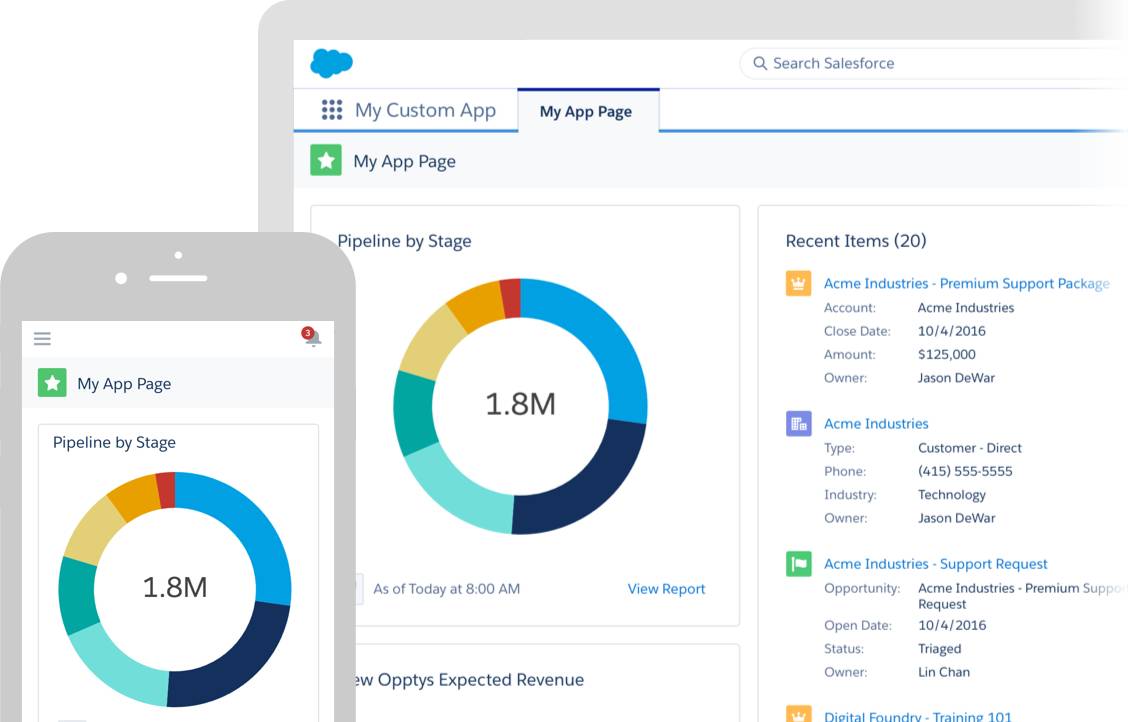

For adding user interface elements, Lightning app builders have a number of quick and easy features.Non-developers can use the lightning app builder to build applications by connecting standard or custom components.Lightning elements must be included in interactive user experiences with JavaScript development to match user interface requirements. Lightning was created to deal with such problems. For mobile apps with limited and high latency networks, Visualforce with page-centric characteristics would be a poor choice. Lightning components can be employed when developing Salesforce mobile applications. Partner community: Salesforce classic could be used to build a community for partners. It can be used as a container in a third-party application to build a unique JavaScript experience. If you’re already using JavaScript frameworks like Angular JS or React JS, keep using them. The aim was to create a page-centric experience with minimal client-side logic. The following are a few used cases that will illustrate how both can be utilized: Visualforce: The Java Script part of the lightning modules often modifies or improves the user interface for the user’s convenience. With regard to the user’s interaction on the website, JavaScript will implement the UI in the future.

Following that, the bundle returns to the client and begins loading in the browser. The user makes a request for a feature or an application under the UI Generation aspect of the Lightning components. Lightning Components UI Generation Aspect Following the user’s interaction with the web page, the browser displays HTML to the user. The server then sends the HTML output to the browser to complete the operation. The user requests a web page, and the server processes the request by executing the page code under the UI Generation aspect of the Visualforce. Lightning Components Visualforce UI Generation Aspect Which one would you prefer if they both provide ways to create custom UI for Salesforce? Let’s compare Salesforce Visualforce Components and lightning components: Visualforce’s UI Generation vs. Lightning is a cutting-edge user interface framework that helps developers create immersive web applications for both mobile and desktop devices. Visualforce assists in the creation of personalized user interfaces with native hosting as a platform that includes tag-based markup language and server-side controllers. Lightning components, on the other hand, are a completely new version of the interface that designs business web applications and makes them compliant with mobile and desktop services. Visualforce aids in the simple implementation of a company’s database. Both Salesforce Visualforce and Salesforce Lightning have several key features that help businesses run more efficiently.


 0 kommentar(er)
0 kommentar(er)
